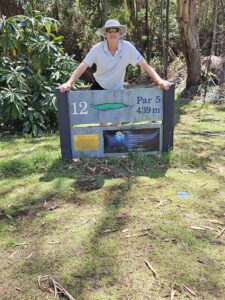A new name and new era for Maggs Reid Stewart
Welcome to our new-look group of businesses! We are thrilled to introduce you to this exciting evolution of our offerings and with our brand.
For the last 20 years, we have been unwavering in our commitment to provide dedicated and thorough accounting support, and are proud of the unique way in which we service our clients:
- We are a mature team with years of experience between us.
- We look to our clients’ future and how we can support their long-term success and security – unlike many accountants who only look back at the previous financial year.
- We use cutting-edge software and have even beta-tested one of the country’s premier software solutions to market.
- We have accreditations in specialist areas that set us apart from other accountants.
Whilst we honour our long history as Maggs Reid Stewart Pty Ltd, it no longer reflects who we are, what we do, and how we do it. Importantly, it doesn’t truly reflect our value to you.
From today, Maggs Reid Stewart Pty Ltd will trade as SMARTA Accounting Solutions.

Why SMARTA?
SMARTA stands for Strategic Management And Reliable Tax Advice.
It embodies our commitment to provide forward-thinking, dependable solutions tailored to your unique needs, whether that’s complex financial support, or the simple but assuring knowledge that you can rely on your taxes being correct.
But that’s not all…
Meet SMARTA Super Solutions!

From today, Maggs Reid Financial Planners Pty Ltd will trade as SMARTA Super Solutions.
Whilst SMARTA Super Solutions can’t provide investment or insurance advice, we can help and guide you with advice about such crucial matters as :
- Making super contributions.
- Starting or stopping super pensions (with the right amount at the right time).
- Opening or closing a self-managed super fund (SMSF).
- Buying a property in a SMSF.
- Death benefit nominations (so making sure your super doesn’t go to someone else).
- Managing your total super balance and maximum amount within super.
- Downsizer contributions.
- Maximising contributions from a sale of a small business.
Crucially, if you make a mistake with your SMSF, then SMARTA Super Solutions has the expertise and qualifications to help you rectify it. Unlike unlicensed accountants who are unqualified in this area and therefore prohibited from providing such assistance (and who in any case don’t have the training, software or experience), SMARTA Super Solutions can guide you through the resolution process.
Finally, we’re pleased to officially launch:
SMARTA Protection Solutions Pty Ltd

SMARTA Protection Solutions Pty Ltd is a new brand which provides advice regarding succession, asset protection, and estate planning (please note, wills and related documents are prepared by trusted lawyers who we refer to).
SMARTA Protection Solutions Pty Ltd has three key offerings:
- The experience to identify how your assets might be exposed.
- The knowledge to advise you on how to best protect your assets.
- A library of trust deeds, company constitutions and other key documents tailored to reflect your wishes.
This new offering ensures that your assets are protected from falling into the hands of others, so they go the right people in the most efficient manner.
SMARTA Protection Solutions Pty Ltd is a critical addition to our suite of services and underpins our overall focus of making our clients more successful and more secure.
What does all this mean for you?
As we enter this new phase of our business, you can enjoy:
- Expanded services: The rebrand of SMARTA Accounting Solutions and SMARTA Super Solutions as well as the introduction of SMARTA Protection Solutions Pty Ltd means we offer you a greater range of specialised services.
- Increased expertise: You will continue to benefit from our extensive experience and qualifications, particularly in areas where most accountants are not licensed and/or not experienced to provide advice.
- A client-centric approach: This new evolution emphasises our commitment to support your long-term success and security, with a continued focus on offering a personalised service and strategic advice.
Importantly, you don’t need to do take any action. Just keep an eye out for any future correspondence from our three new brands.
What’s next?
You’ll notice our refreshed branding being rolled out across all communications.
You will hear more about our services as we approach June and all the forward tax planning that takes place around that time.
Please also keep an eye out on invitations to a series of webinars focusing on making you more successful and secure.
Please visit our new web page at – https://smartaaccountingsolutions.com.au
As always, we’re here to answer any questions you may have.
Thank you for your continued trust in us.
Alex Stewart
2025/26 Federal Budget

I will begin by making the usual but important comment in that it must kept in mind that the Budget is just a series of announcements. Bills still have to be put before the House of Representatives and then passed by the Senate. Some bills may pass quickly. Others may take a while to pass or be substantially modified. Or on rare occasions, not even passed. And of course we have an election looming. As you will have heard many times already, there are few announcements. One analysis briefing scheduled for the usual hour didn’t even get to the half hour mark! Of more interest is what was not in the Budget. We will address those in our analysis paper which we will release on Monday. In the meantime, here is our initial Budget briefing paper:- MRS Initial Budget paper 2025-26 We welcome any questions you have (particularly after you read our Budget analysis paper to be issued on Monday). |
Bucket companies – you have to wait!

We reported three weeks ago that the ATO lost a significant case on bucket companies – you can read that blog – here. The Full Federal Court in a 3 – 0 decision decided that unpaid entitlements from a trust to bucket companies did not constitute a loan within the meaning of Division 7A.
That is they did not have to:-
- Be paid out before lodgment of the year of the loan’s Tax Return or otherwise
- Put under the terms of a Division 7A loan agreement.
This Full Federal Court decision was favourable to taxpayers.
The ATO have filed a special leave application to have the matter re-heard by the High Court (the highest court in the land).
It has been said by some commentators that the ATO’s post 2009 view was controversial. Other tax experts have pointed out how the legislation has been subject to amendment after amendment in order for the way they want it to work. Others have said they had to appeal as there is way too much at stake. And do so even though they have unanimously lost a decision before 3 very senior judges.
And so we wait.
We understand the appeal may be heard by August.
In the meantime, the ATO have issued what they call a Decision Impact Statement.
In that Statement the ATO have advised that:-
- The ATO will continue to administer the law as it now stands.
- The ATO will not issue any amendments or private rulings nor consider any objections until the High Court hears the appeal.
- In tax speak, the ATO will continue to consider reimbursement agreement issues where no complying Division 7A loan agreement exists.
We will keep you posted.
And so we wait …
Timely reminder about unclaimed monies

Unclaimed monies is such an important but hidden sleeper that it is worth returning to this.
We blogged on this 5 years ago when there was $1,100,000,000 of unclaimed monies in bank account, shares and life insurance. 2 years ago it had grown to $1,500,000,000 (we can’t find a more current number).
How can I lose money that is mine?
The balance of any bank account unused for more than 7 years is transferred to the government.
So too is a life policy which is not claimed within 7 years of maturity also becomes unclaimed money.
It is not easy to reclaim one’s money as what one might think. So to avoid the problem of trying to recoup unclaimed monies, you need to:-
- Create and check a list of bank accounts, shares and endowment life insurance policies (and store it securely).
- Transact on any bank account every seven years. Please remember that charges debited or interest credited by a bank to your account do not keep an account active. So you need to either make a payment from or deposit into an account for it to be considered active. Make a habit of transacting on every bank account in the first week of January (or July if you’re finance minded like me and think in financial years).
- Update contact details after a move.
If you want to know more or undertake a search on a closed bank account or shareholding or matured life insurance policy, go to http://tinyurl.com/qjozgon
Good news for bucket companies?

So is the Full Federal Court decision in Bendel’s case good news for bucket companies? We will have to wait and see as we will explain.
The Full Federal Court has just handed down a 3-0 decision in favour of bucket companies (being companies that receive trust distributions). The judges’ decision ruled in favour of distributions by trusts to companies not being a loan and therefore by extension not coming under Division 7A.
So what do we do now?
Nothing.
We wait.
We wait until 19th March by which time the ATO must seek leave to appeal the case to the High Court.
Will the ATO appeal?
On the one hand they have just lost the case 3-0 before some of the country’s most senior judges. Their chances appear slim.
On the other hand, the ATO has a lot to loose so may well appeal. And if they appeal, we wait for certainty until the appeal is heard by the High Court.
The ATO may also seek to have the law amended.
So for the time being, we wait and see.
If this decision of the Full Federal Court holds or is upheld by the High Court or the law not subsequently changed, this means either that distributions to bucket companies:-
- Do not have to be paid out in full to bucket companies before the year of a loan’s Tax Return is lodged to paying interest or
- If not fully paid out, ensuring subsequent payments comply with an interest and principal repayment formula.
This is particularly good news for small businesses as they will be able to retain funds to meet working capital needs – rather important with all the cost and cash flow pressures being experienced by small businesses.
We will keep you posted.
Supporting Marysville Golf Club

It was great to take a friend from the US to Marysville Golf Club yesterday.
Maggs Reid Stewart has been pleased to support the Marysville community since the Black Saturday bushfires of 2009.
Golf and bowls are such wonderful games that one can play well after one has ceased playing all other sports. Moreover, both supports provide a wonderful social fabric, particularly so in a country town.
Maggs Reid Stewart looks forward to continuing to support the Marysville community by renewing its sponsorship of the Marysville Golf Club.
You can also support Marysville by taking a day trip but, better yet, staying over a weekend. It is an area of great beauty with plenty of things to see and do with terrific food options (including at the golf club itself with its very pleasant views from the clubhouse).
You can read more by clicking here.
Are you entitled to claim a government grant?

Are you entitled to claim a government grant? You may be more in luck than you think as there are currently 237 grants and programs available to Victorian businesses.
Government grants and programs can broadly be categorised in two ways:-
- Those available to support new businesses.
- Those that target particular industries and activities.
The support is usually financial and can be used for:-
- Advice and mentoring
- Funding
- Loan
- Sponsorship
- Subsidies and rebates.
- Tax benefits
Two of the most well known ones are:-
- The Export Development and Market Grant – provides at least $20,000 for exporting to existing or new key markets.
- Research and Development Tax Incentive – provides a tax offset to companies with turnover of less than $20,000,000. The tax offset is the sum of the company’s tax rate (either 25% or 30%) + an additional 18.5%.
The rules to these two grants are quite complex as there are many criteria to consider and pass.
Want to know more?
- Ask us
- And go the Australian Government’s Grants and programs finder – click here


February lodgement deadlines
With the Christmas holidays now behind us, we are now back in normal lodgement patterns. So here are the lodgement deadlines for February.
Deadlines for the month of February 2025 are:-
- 7th – monthly Pay-roll Tax – January 2025 remuneration
- 21st – monthly BAS remitters – January 2025 BAS
- 21st – quarterly BAS lodgers with monthly PAYG Withholding remitter – wages tax for January 2025
- 28th – quarterly BAS lodgers – December 2024 BAS
It is timely to remind all taxpayers that the ATO has been on the war path of late.
Whist they were friendly (perhaps overly friendly) during covid, the ATO is now actively chasing unlodged documents and moreover aggressively chasing tax debts.
It is also no longer easy to have late lodgement penalties and interest removed (no matter what the cause reason is).
And it is recounted by many fellow accountants that the ATO continues to issue Director Penalty Notices (DPNs) at an alarming rate. DPNs are issued where GST, PAYG Withholding or SG super remains unreported and unpaid after 3 months. A DPN makes a director(s) responsible for that debt. Options are limited and require prompt action – and if not paid or otherwise dealt within 30 days, a director will be left being personally responsible for that debt. This could mean bankruptcy.
You can read more about unpaid super here
I have also heard of where a director’s address as recorded with ASIC is out of date. The problem then is the ATO will mail the DPN notice to the address as recorded with ASIC. So apparently some directors have been unaware one was even issued.
There is also an issue that the 30 day countdown starts from the time the ATO issues a letter. The problem is that it may take 6 days to be received.
TIP Advise us as soon as you change address. In any case there is a 28 reporting deadline for reporting a change of director’s details to ASIC.
TIP Don’t fall for the mistake of not lodging or paying a BAS or SG super whatever the reason. In the first instance you will avoid late lodgement fines. Secondly, you can always enter a payment plan if necessary.
SG super reminder

I trust you had an enjoyable festive season – but it is now time to focus on time critical obligations. So here is a quick Super Guarantee (SG) super deadline reminder.
Tuesday 28th January is the end date for satisfying your SG super obligations for the December 2024 quarter.
Please make sure you do not confuse this obligation with the December quarter BAS. The December quarter BAS automatically has a one month extension to 28th February . There are no extensions for reporting and payment of SG super.
Please note that super clearing houses can take up to 8 business days to pass the money through to the super fund. It therefore means that processing and payment to the clearing should be made as soon as possible.
We therefore recommend paying your Dec quarter super by Wednesday 15th January.
And please make sure you have been calculating super at 11.5% since it increased on 1st July 2024.
Please refer to our previous quarterly reminder as to what forms of remuneration are subject to and not subject to Superannuation Guarantee.
SG super should never be paid late as late payments attract substantial interest and penalties. Furthermore, SG (and BAS) liabilities that remain unreported and unpaid after 3 months automatically can become personal debts of directors.
We welcome any questions you might have.
Beware the new Vacant Residential Land Tax (VRLT)!

One of the state government’s many new taxes is the Vacant Residential Land Tax (VRLT). And it requires action no later than 15th January.
So what is the VRLT?
It is a tax imposed on residential properties not occupied for 6 months or more during the 2024 calendar year.
Why you need to be careful
Don’t be fooled by Land Tax being within the name of this new tax. This ain’t no small charge!
There are 3 reasons as to why an unexpectedly large liability may arise:-
- Whilst Land Tax is based off the value of land, VRLT is based of the capital improved value of the property (so house and land).
- There is no threshold as with Land Tax (whereas there is a tax free threshold before Land Tax is payable – albeit that has now been slashed from $300,000 to $50,000).
- The rate for 2025 (based off 2024 unoccupancy) is a flat 1%.
So how much is payable?
In the first year, it would be $10,000 on a $1,000,000 property; $15,000 on a $1,500,000 property.
But the rate rises to 2% in 2026 – so $20,000/$30,000 is payable.
And then it rises to 3% in 2027!
The only “good thing” about it is that, as with Land Tax, it is deductible.
So what does the state government need you to do?
Property owners should have received a letter before Christmas from the State Revenue Office.
That letter includes a link with which to notify the State Revenue Office that you have a residential property that was capable of being occupied but was unoccupied for 6 months or more during 2024.
You need to do so no later than Wednesday 15th January 2025.
There is no obligation to do so if the property was under construction, under renovation or that was uninhabitable as at 31st December 2023 (but may be liable from the 2026 year as this exemption can only run for 2 years). Beware of what constitutes a property that is under construction, under renovation or that was uninhabitable.
So what constitutes vacancy?
A residential property that is not occupied as either:-
- A principal residence of the owner or an occupant permitted by the owner.
- Under a lease or genuine short term arrangement.
None of the available State Revenue Office guidance specifies what constitutes a day. Presumably it is counted by nights stayed – so presumably a weekend counts as one day and not two.
Are there any exemptions?
Yes.
Properties that are exempt from Land Tax are exempt from VRLT.
Other exemptions include:-
- Holiday homes (see below for special rules).
- Homes used for work purposes.
- Properties transferred in the previous year.
- New residential properties.
- Newly developed properties where the ownership is unchanged.
It is beyond the scope of this blog to explore all exemptions so one must be clear on whether they do in fact satisfy one of these exemptions to avoid risking penalties of up to 90% as well as interest.
There is also no exemption based off when a property was purchased. VRLT simply applies to residential properties owned at 31st December 2024.
Holiday home exemption
We will explore this exemption due to its commonality to many.
An exemption is available to an owner who has an Australian principal residence (either owned or rented from someone else).
It must be a genuine holiday home to the satisfaction of the State Revenue Office. They give regard to location and distance (which is an interesting matter for those people I still know who have long family held generational family holiday homes in places such as Aspendale and Frankston).
The exemption applies when the property is occupied for at least 4 weeks. That need not be consecutive.
One can only claim one holiday home exemption.
Special rules apply to trusts and companies.
Special rules also apply to deceased estates.
Whilst the State Revenue Office has commented on properties owned by trusts and companies, it has not commented on properties owned by companies where that company itself is owned by a company or trust. It is unclear whether the VRLT has been poorly drafted or the State Revenue’ Office guidance is lacking.
When is the VRLT payable?
It remains to be seen how quickly these notices issue.
One then has 60 days to pay the tax.
It can be paid by B-Pay, credit card, debit card or instalments.
Objection rights
An owner has 60 days to object upon receipt of the assessment.
We suspect given other current State Revenue Office activity in respect of other taxes that response times will be slow.
If unsuccessful, one can then appeal to VCAT.
Should I keep or sell my vacant property?
Perhaps the first question is can I or should I rent it? This may require a substantial outlay to ensure that it meets rental standards – noting that one modern requirement is heating within every room.
Whether you hold or sell is not a matter to be taken lightly. For most people the most appropriate course of action is to engage a financial planner as they have powerful modelling software that can extrapolate the financial outcomes.
A word of warning
No doubt there will be some who may be tempted to falsely not declare a vacant property subject to VRLT. We have already referred to the substantial penalties and interest. One should also be mindful that the State Revenue Office can cross match rental bonds as well as water and electricity usage.
Closing remarks
This has been a difficult blog to write as the tax is new, there is little literature to refer to and some of that is confusing or unclear.
If there is doubt, it seems best to notify and then appeal.
That all said, we welcome any question you may have.
